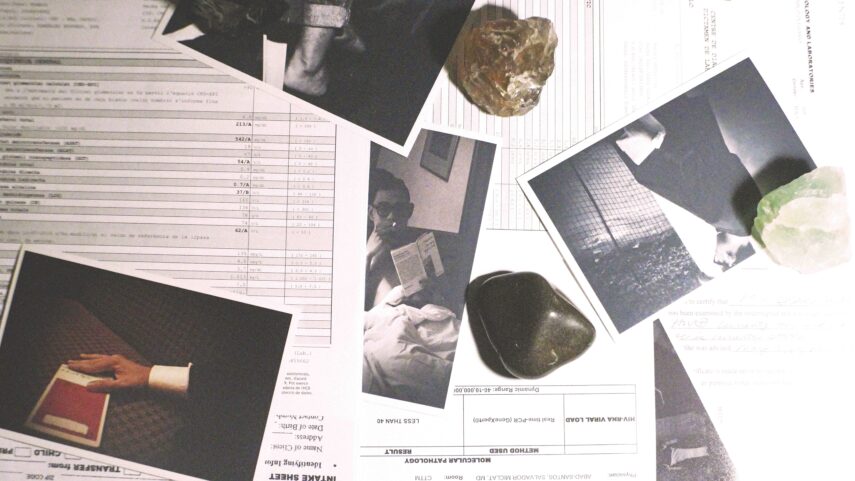/(séro)TROPICAL(e) CHAPITRE II: Cicatrices…/
by Gian Cruz



Gian Cruz (b. 1987, Manila, Philippines), is a multidisciplinary Filipino artist whose artistic practice is heavily rooted in photography, architecture and diasporic studies of Southeast Asian migrant communities in Europe integrated with his institutional work and background in art theory and criticism. For the 2019-2020 cycle; he became the first Southeast Asian participant in completing the Independent Studies Programme at MACBA. Furthermore, he is the first student of Asian heritage in its 18-year history.
His practice extends to performance, translation, history, architecture, ecology, cinema, HIV/AIDS activism and several other fields and contexts that engage with his current preoccupations as an artist. Over the years, he has worked closely with the National Museum of Modern & Contemporary Art, Korea, Jeu de Paume, Paris, The Museum of Photography, Seoul, La Biennale di Venezia, Visual AIDS, New York, 4A Centre for Contemporary Art, Sydney, and Casa Asia, Madrid; to name a few.
Translator’s Note:
les images réelles ou imaginaires, celles qui suivent jusque
dans le sommeil
les images d’un moment baignées d’une lumière qui
n’appartient qu’à elles
– Annie Ernaux, Les années
La tendresse est un choix politique
– Lukas Dhont, filmmaker
I, initially almost a decade ago, inscribing myself within a garden and a terrain from here and the far away there culminating prodigious elsewheres alleviating and obscuring an illness. It was specifically the myriad of unexplainable bodily transformations and degradations I’ve endured in battling with complications related to AIDS.
One was the compulsive necessity to survive and attend to a total bodily recuperation while the crescendos of this undertaking pushes further into the background—abysmal silences, incongruent emotional highs and lows, the resuscitation of traumas alongside deep-seated unresolved traumas going back to early childhood, and a healing that at most times feels futile and leading nowhere.
I recall an interview of Helmut Newton in my adolescence referring to “scars” as “cicatrices” (and how the infliction of French into my communication further complicates my expression in alliance with the labyrinthine linguistic landscape of the Philippines… together with the many languages I know of and speak and write) and how the latter would resurface irreverently and unprecedentedly sometime when the monotony and calm infiltrates my quotidian.
And here I am… confronting these chimeras making more perplexing my own set of fears, childhood traumas, my unhealed inner child, my responses and threshold for toxic masculinities which turned out to be one unresolved ordeal with my father, my mom’s perpetual apologetics to family for my actions, the vertiginous task of self-love as a cisgender homosexual man in a very Catholic country and a very toxic culture culminating colonial epochs into the past, present and future limitlessly, a harrowing and never-ending quest for love, isolation, liberation and enlightenment in an irresolute complicity with my own culture and society, visualizing images of myself amongst pieces of paper tracking my laboratory results and viral load through the years, perpetual cycles of rejection and exclusion in the age of undetectability, and how my birth place of Manila resuscitates and ceaselessly reinforces a languorous death for my spirit and my body and my inexhaustible imaginaries. (This feeling is summed up perfectly by a favorite song by the National called “Fashion Coat” where the lyrics go like—“I die fast in this city. Outside I die slow.”)
Lastly, here is an archive of the life of an artist who dreamt big but was never really given his due place within the currents of queer representation and dialogue in his own native country and his own immediate community as a site for affliction and great unbelonging. And I perform around an inextinguishable melancholy between loss and yearning fighting for visibility while… I tend to the discomfort of my physical body and my spirit in this place of great loss and torment… but also that resonating elsewhere that this place doesn’t deserve me.
Perhaps with this invisibility and default omission, I have found some sort of peace and gained further the superpower of an inextinguishable desire to live between worlds and presumed worldings that continue to ceaselessly progress into these tropes of limitless imaginaries and places of affective caresses of some kind of distant yet intimate utopias. I am here but never fully coming to be completely present here for there is where the hope in me to continousuly imagine worlds and tell stories befitting my so-called imaginaries that never can completely come into being where I currently am. Furthermore, being completely here is comparable to a destitute and immediate death because I failed to hold on to the light still faintly illuminating a path somewhere far away from here.
